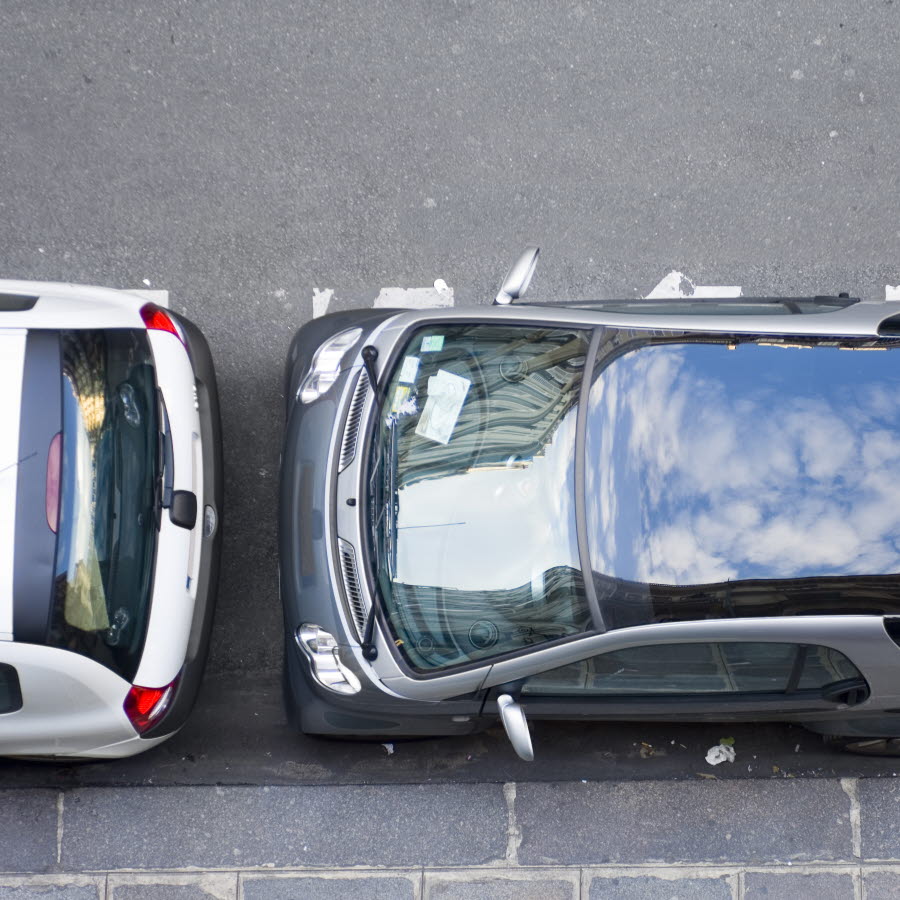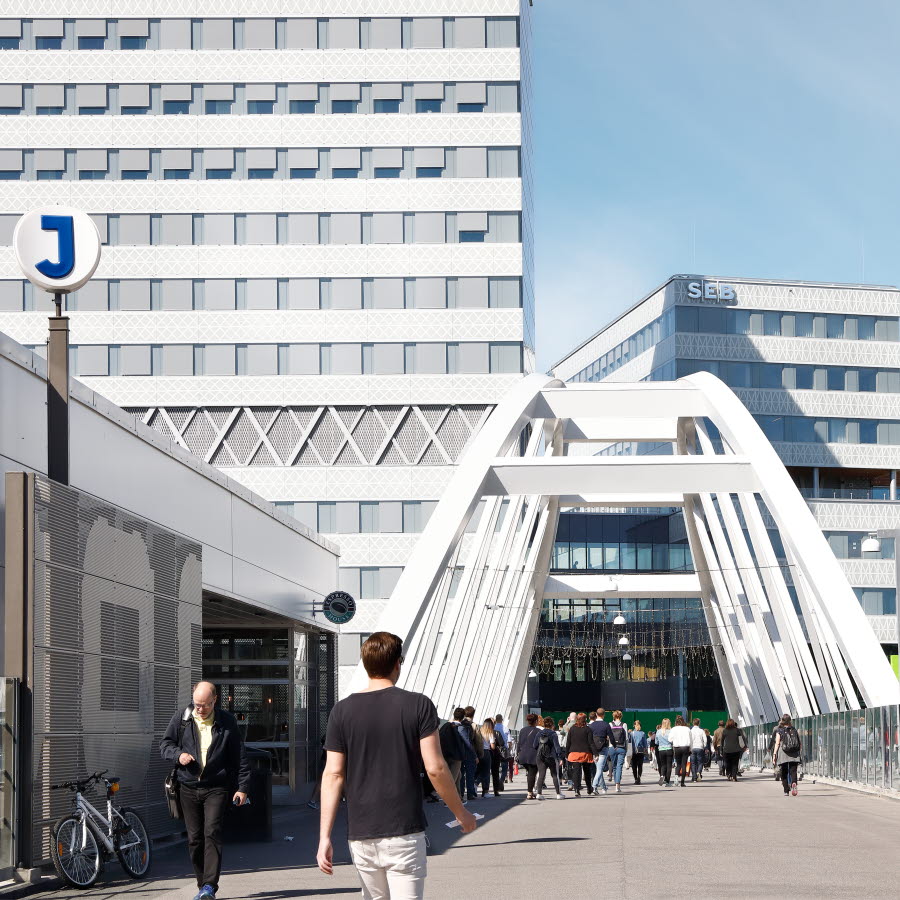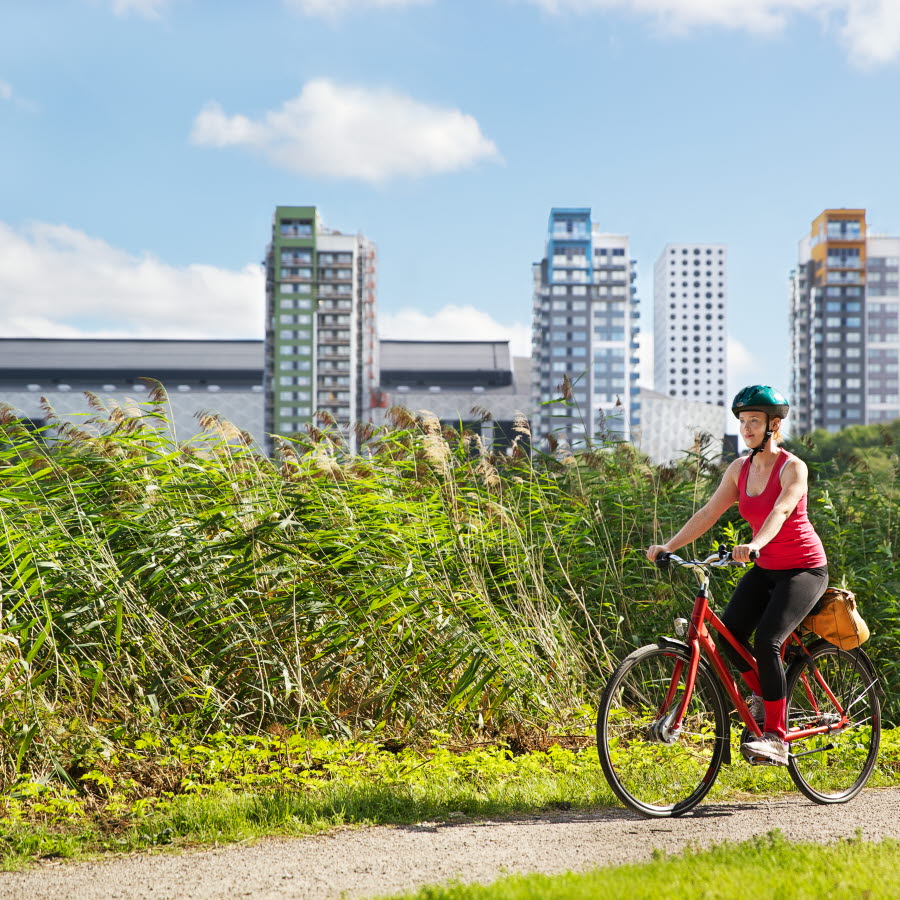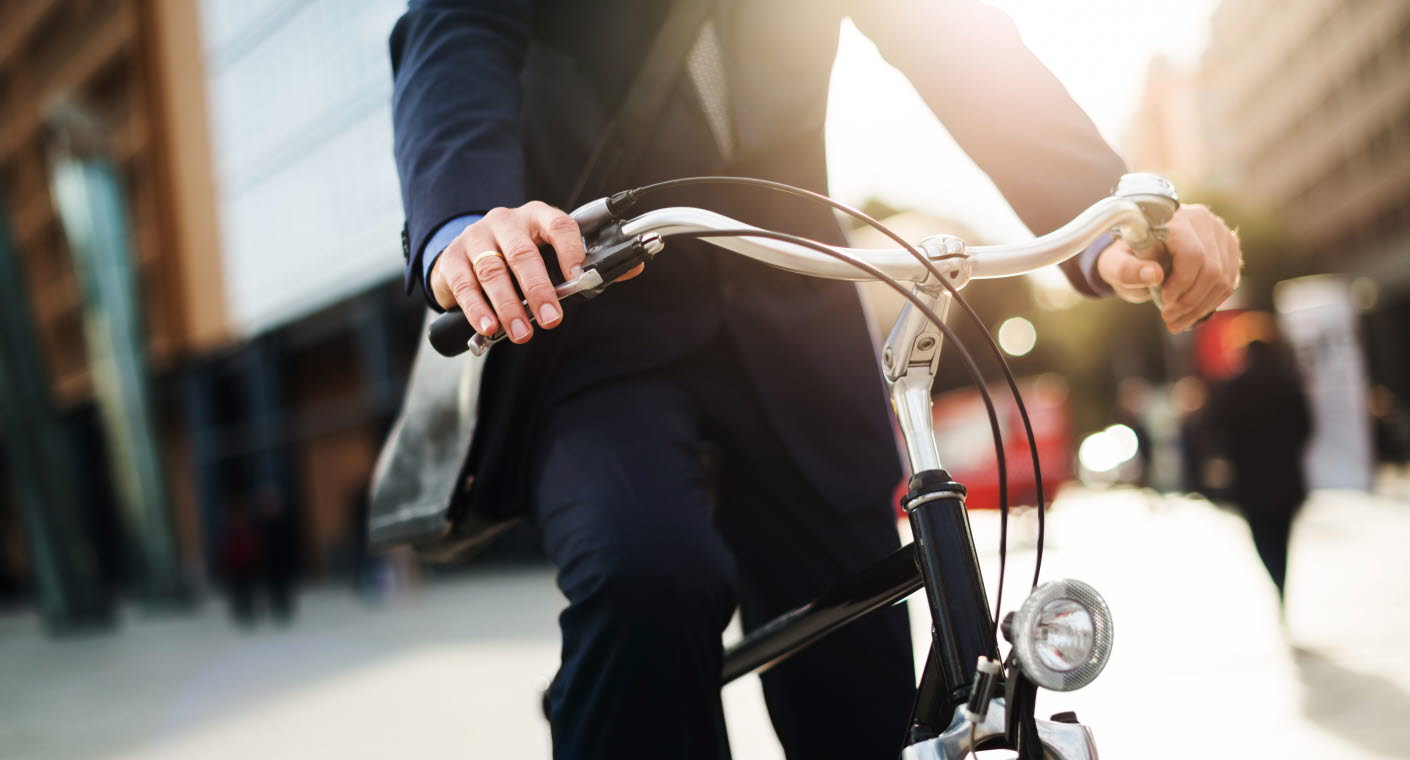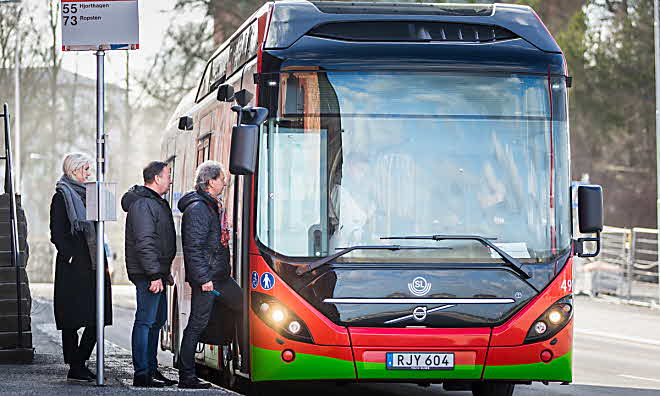Results for Arenastaden 2025
Between 2022 and 2025, travel patterns among employees in Arenastaden have changed significantly. Car dominance has decreased, while public transport has strengthened and become the leading mode of travel in terms of distance.
At the same time, the vehicle fleet is undergoing rapid electrification. The proportion of electric cars has increased significantly, while petrol and diesel vehicles have decreased sharply. Combined with changing travel habits, this has led to a substantial reduction in per capita CO₂ emissions. Average emissions from commuting have fallen by 45% between 2022 and 2025 – from 426 kg to 235 kg per employee per year.
The results underline the central role of public transport. The planned subway expansion by 2028 is expected to further reduce car usage -13% of current car users already state that they will replace car journeys with the subway (18% are unsure). However, to make public transport even more attractive, there is a need for better punctuality, higher reliability, and more flexible ticketing options, particularly for employees who regularly work remotely.
The average travel cost is currently around SEK 15,700 per employee per year, which is low compared with other similar studies.
Key drivers behind the development are:
Increased public transport use and reduced car dependency
- Rapid electrification of the vehicle fleet
- Employees moving closer to Arenastaden
- Continued high share of bicycle/e-bike travel
- Improved infrastructure for sustainable mobility
- Actor-driven, data-driven action plan
- Benchmarking – learning from best practice
- Testbed for research and innovation
In summary, the 2025 CERO follow-up shows that commuting emissions in Arenastaden have decreased at a faster rate than the target scenario set in the process – achieving a reduction rate that exceeds the Paris Agreement’s 2030 target. Moving forward, there are strong opportunities to further strengthen sustainable development, including reversing the declining trend in walking and cycling trips and through targeted investments in the reliability and accessibility of public transport.
Download the report (Swedish only)

